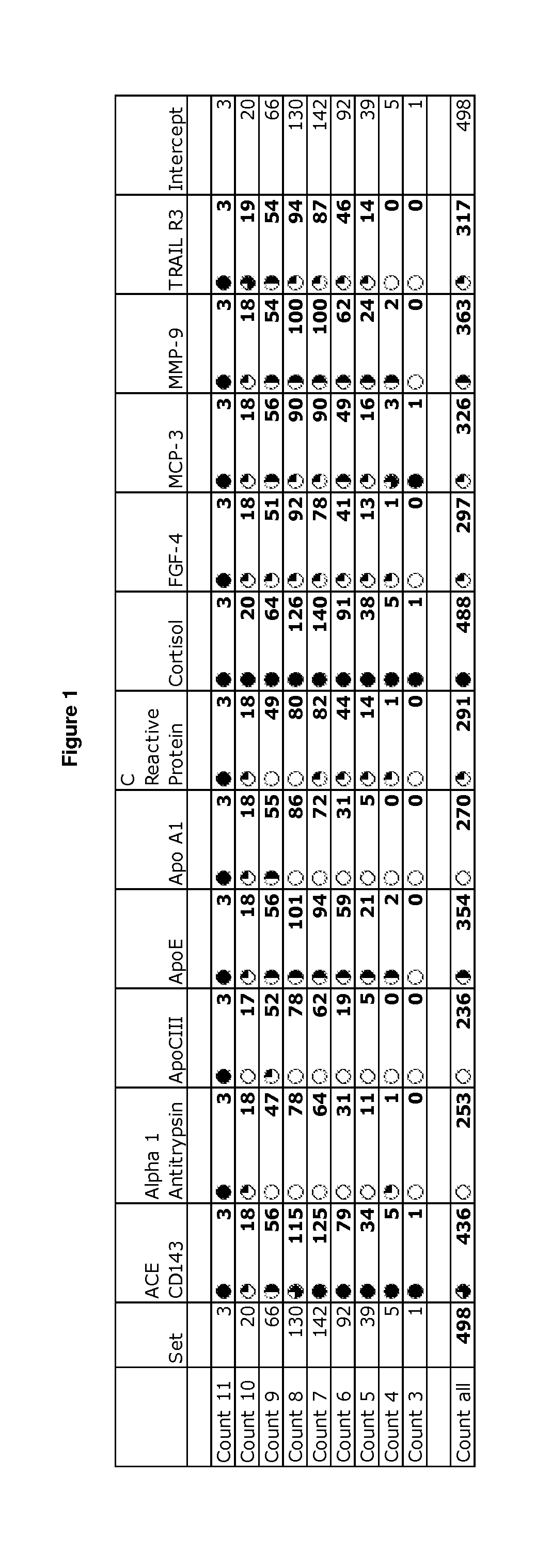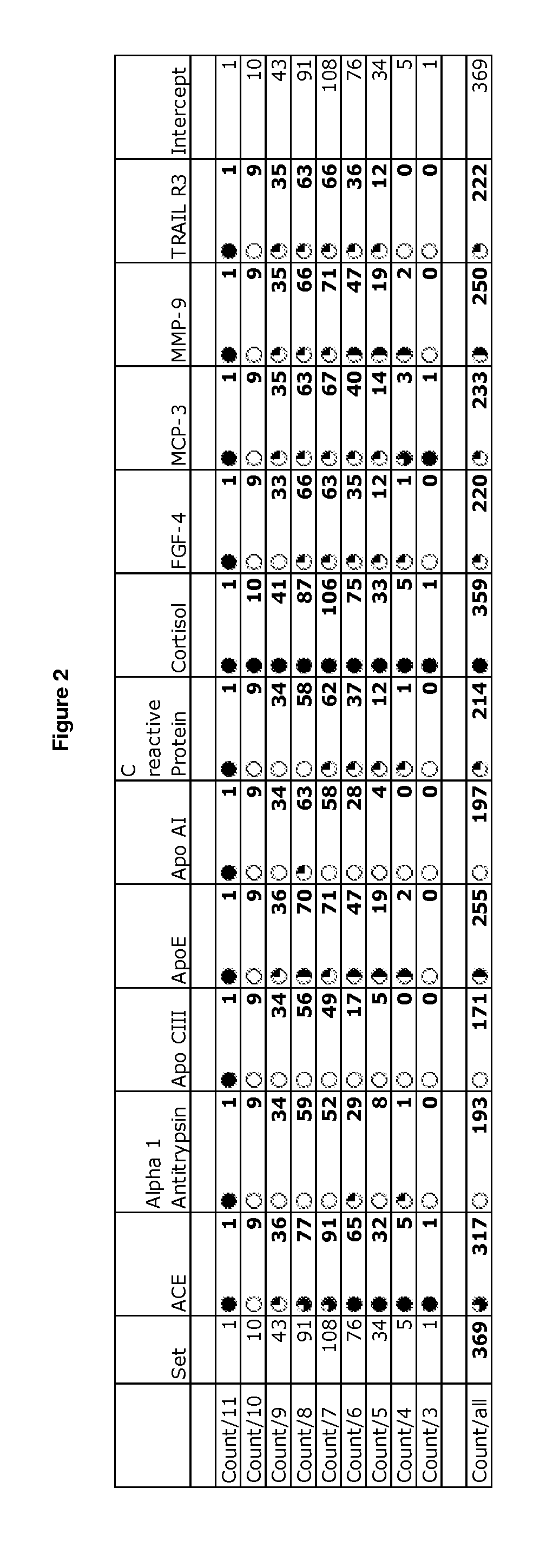Novel groups of biomarkers for diagnosing alzheimer's disease
a biomarker and alzheimer's disease technology, applied in the field of alzheimer's disease biomarker new group biomarker, can solve the problems of affecting the clinical trial of novel therapeutics for ad, lack of clear, objective and highly accurate data, time-consuming and expensive problems
- Summary
- Abstract
- Description
- Claims
- Application Information
AI Technical Summary
Benefits of technology
Problems solved by technology
Method used
Image
Examples
example 1
AD VS. NDC Biomarker Differential Expression Test
[0110]The AD vs. NDC biomarker differential expression test was developed to determine or aid in the differentiation of AD from non-demented subjects. This test result may be combined with other clinical assessments, including cognitive assessment tools and clinical observation, in making a determination.
[0111]We examined more than 120 proteins detectable in plasma samples from 377 human subjects (Alzheimer's disease and non-demented controls) using Rules-Based Medicine (RBM) (Rules-Based Medicine, Inc., Austin, Tex.) to assay the samples on a Luminex platform (Luminex Corporation, Austin, Tex.). A signature panel of eleven (11) proteins was selected for the Alzheimer differentiation panel, and an algorithm capable of distinguishing AD samples from non-demented samples (NDC) was developed.
1) Sample Collection and Processing
[0112]At least 1 milliliter of whole blood was collected via venipuncture from the tested patient. The blood was ...
PUM
| Property | Measurement | Unit |
|---|---|---|
| Residual Error | aaaaa | aaaaa |
| concentration | aaaaa | aaaaa |
| concentrations | aaaaa | aaaaa |
Abstract
Description
Claims
Application Information
 Login to View More
Login to View More - R&D
- Intellectual Property
- Life Sciences
- Materials
- Tech Scout
- Unparalleled Data Quality
- Higher Quality Content
- 60% Fewer Hallucinations
Browse by: Latest US Patents, China's latest patents, Technical Efficacy Thesaurus, Application Domain, Technology Topic, Popular Technical Reports.
© 2025 PatSnap. All rights reserved.Legal|Privacy policy|Modern Slavery Act Transparency Statement|Sitemap|About US| Contact US: help@patsnap.com


